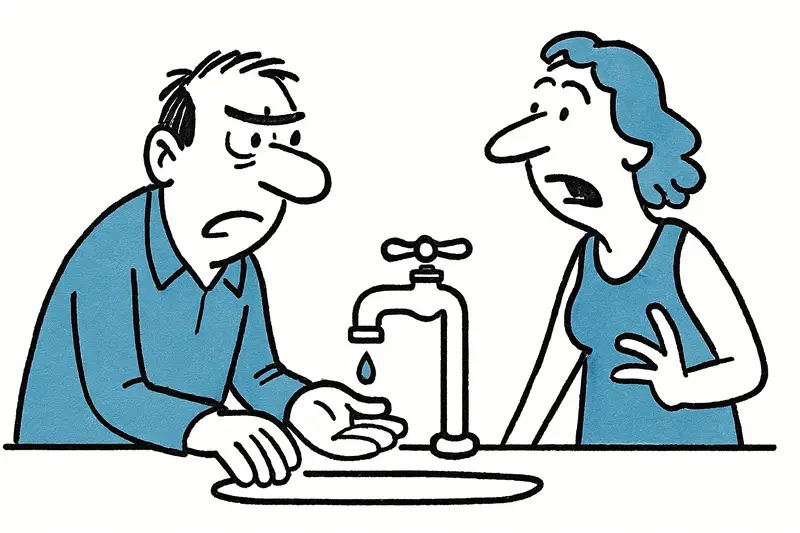Gorg Blau and Cúber are well below last year's levels. Emaya and weather services warn: Without significant rain, further restrictions loom.
Reservoirs on Mallorca continuing to fall — what this means for Palma and the villages
The numbers sound unremarkable until you turn on the tap and notice that less water comes out. Currently the island's two main storage reservoirs, Gorg Blau and Cúber, are together around 29.45 percent full. Gorg Blau holds about 30.51 percent of its capacity of 7.36 million cubic metres, Cúber is at just under 27.81 percent. This is shared by the utility Emaya — and the hotline voice does not sound calm.
In practice this means less cushion for hot spells, for agriculture, and for the peak tourist season, which in our villages is never entirely gone. Meteorologists of AEMET describe an "slightly dry" August: on average only about 13.1 liters of rain per square meter — around 38 percent below the long-term average. Yes, there were some heavy showers, for example in Colonia de Sant Pere, but they did not save the overall picture.
Why this is worrying
The island lives for the most part from these reservoirs. Palma receives additionally around 17 percent of its drinking water from springs that have been used for centuries — water that reaches the island center through limestone conduits from the Serra de Tramuntana. Altogether such springs feed an estimated over 30 million cubic metres into the network. But when storage shrinks, this additional supply suddenly becomes much more important.
Experts warn: Without meaningful rainfall in autumn could the lakes fall to 20 percent. By comparison: last year the reservoirs reached a low of around 27 percent in October; after autumn rain the level rose to around 40 percent by year end. Such fluctuations are normal — but they become riskier when dry summers occur more frequently.
What is already happening (and what we can do)
On the island you can see it in small details: prickly lawns, thinned irrigation plans in gardens, isolated restrictions on large-scale watering in municipalities. Some farmers push drinking water into tanks, others hope for rain. Emaya recommends households to be thrifty — fix dripping taps, take a shower instead of a bath, water at night if possible.
In the short term only two things help: saving together and reliable rain. Forecasts are hesitant. Until there is noticeably more water in the reservoirs, it remains advisable to treat the last drop with care — whether you live in Palma, Sóller or in a mountain village. And yes: the discussion about long-term solutions, storage techniques and fairer distribution should now be at the top of the agenda again.
Similar News

Watch theft in Palma: Escape to Barcelona ends at the airport
A tourist in Palma was the victim of a brutal robbery. The suspect tried to flee but was arrested at Barcelona airport. ...

Severe Weather in Mallorca: Ongoing Delays at Palma Airport Cause Frustration
Due to heavy rain and thunderstorms, there are still significant delays at Palma Airport. Travelers from Germany should ...

Northern Lights over Mallorca: When and Where You Can See the Aurora Borealis
Between October 20 and 29, the Northern Lights could be visible over Mallorca. Who wouldn’t want to go to Scandinavia? A...

Costitx: Flowers, Stones, and a Look at the Starry Sky
Small village, big personality: Costitx blends blooming streets, ancient excavations, and an observatory - a day-trip ti...

Die Zeit auf Mallorca: Warum die Uhren hier anders ticken
Auf Mallorca läuft die Uhr offiziell anders als die Sonne — ein Erbe aus den 1940er-Jahren, das bis heute unseren Alltag...
